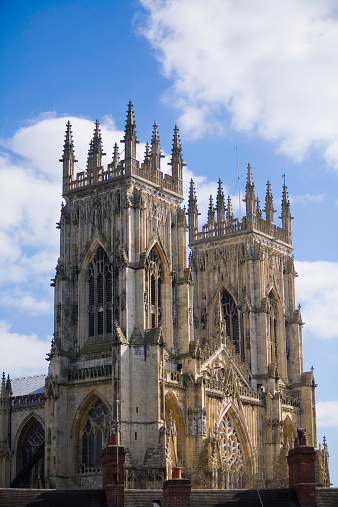
About York
York is a stylish, compact, friendly city of about 100,000 people. The magnificent Minster dominates traffic-free streets, which offer a daily market and fascinating shops. There are cafes, pubs, restaurants and bars for every day of the year. Museums of national importance mix with a new independent cinema complex, whilst York's two theatres, clubs, and concert venues - not to mention the best buskers in Europe - present a huge choice of film, drama, art and music.
From the Vikings, to the Romans, to the Present Day - York is extremely attractive to both tourist and residents. With an abundance of historical attractions; York Minster, The Shambles, Jorvik Viking Museum and The Castle Museum. York is renowned for its most distinctive and stylish shops, restaurants, cafes, pubs (365 to be precise!) and clubs.
GETTING AROUND: Most parts of York are served by excellent bus routes. York lies on the main London to Edinburgh Rail line with London only 2 hours away. Roads are equally as impressive with the A1 approx 15 minutes away, giving easy access to the M1 and M62.
Major Attractions in York:
York Minster Cathedral Yorkshire
York Minster is definitely the jewel in the historical crown of York. The largest gothic cathedral north of the Alps, the Minster was built on what was the headquarters of a Roman fortress.
York MinsterThe first York Minster was a small wooden church built under the care of Paulinus, the chaplain of Princess Ethelburga, who came north to marry King Edwin of Northumbria.
It was then transformed into a stone church by Edwin after he was baptised but it fell into disrepair before being rebuilt by the Bishop of York, St. Wilfrid, in 670.
The current building was started in 1220 by Archbishop Walter de Grey, who, with his Dean and Chapter, decided to rebuild the Norman Minster on a scale to rival Canterbury. It wasn't completed until 1472, although the Minster was in use for much of the ensuing period.
The South Transept was the first section to be rebuilt between 1220 and 1250, with the North Transept just after. Both were built in the Early English Gothic manner but with differences. The south wall is in an elaborate French style with two tiers of doubled lancet windows below an ornate rose window. The north wall houses the famous Five Sisters windows. Walter de Grey is supposedly responsible for the South Transept, while his sub-Dean and treasurer, John Romanus, was associated with the North Transept and also the great central tower.
Walter de Grey died in 1255 and is buried in a beautiful tomb in the South Transept.
The National Railway Museum York
The National Railway Museum is home to a wide range of railway icons and literally millions of artefacts, from Mallard - the world's fastest steam locomotive - to a lock of Robert Stephensons hair. Its vast collections, including more than 100 engines, tell the railway tale from Rocket to Eurostar.
Permanent displays include the jewel in the museum's crown - Palaces on Wheels. With Royal saloons dating back to the Victorian era, visitors have the rare chance to glimpse inside the sumptuous bedrooms, dining rooms and day saloons, which really are palaces on wheels.
The Mallard at the NRMThe only Shinkansen Bullet Train to go on display outside Japan is the first railway vehicle built and run outside Britain to enter the National Collection.
Jorvik Viking Centre York
Explore York's Viking history on the very site where archaeologists uncovered remains of the Viking-age city of Jorvik.
Jorvok Viking CentreGet face-to-face with our expert Viking residents, see over 800 of the items discovered on site, and learn what life was really like in our special exhibitions.
'Fearsome Craftsman' reveals the skills and artistry of the Vikings and includes live craft demonstrations, and 'Unearthed' tells how the the people of York lived - and died - as revealed by real bone material.
The City Walls York
The roman fortifications in York were much smaller, confined to the North side of the river Ouse. Some parts of the present wall do follow the line of the roman wall, beginning in the museum gardens, a good example of roman stonework can be seen in the lower part of the Multangular tower which was the South-west tower of the legionary fortress.
Built around 300 A.D. the interior of the tower was cleared of earth in 1831 to reveal the roman work. A short stretch of roman wall also exists in this area, along with other examples of later building work including the Anglian tower - built probably between 600 and 700 to fill a gap made by the fallen roman wall.
